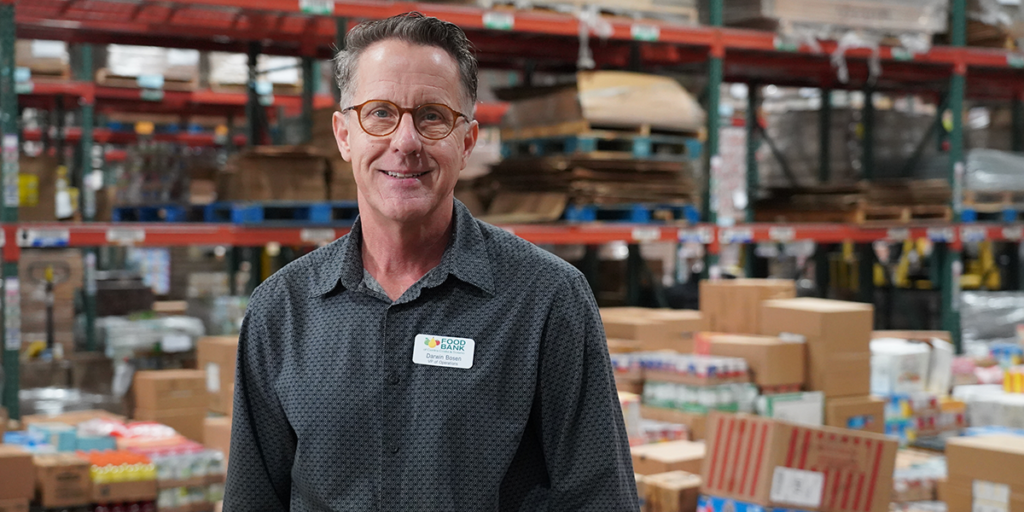For the past three years, the Food Bank’s Strategic Plan has been our North Star as we seek to close the hunger gap in our community. With the help of hunger fighters like you, we’ve worked to improve health outcomes for our neighbors, empower our community hunger-fighting partners, and take our data and technology to the next level.
As our current strategic plan comes to an end, we asked our Vice President of Operations, Darwin Bosen, to share some of the new ways we’re using data and technology to ensure your support goes even further for our neighbors in need.
What are some of the strategic improvements that we’ve made to our operations?
Two of the things I think are most exciting are that we have made it easier to see the nutritional value of the food we distribute, and we have increased our ability to make smart, informed decisions about food we give out.
Using Healthy Eating Ratings (H.E.R.) we are now able to assess the nutritional value of every food we distribute based on its contents, including fat, sugar and sodium. So when we and our partners are making decisions about what to give to the community, we can now make better choices.
We’re also updating how we track our warehouse inventory to what some call “Live Inventory.” With these updates we will now be able see where food came from, when it arrived, how long it’s been there, the nutritional value, and more. And that’s helping us make better decisions on what types of food we’re bringing in and where they should go.
How do you think these changes will improve the Food Bank’s service?
If we don’t provide healthy foods to the community, we are limiting their opportunity for healthy lifestyles. By helping our community be more nutritionally conscious and make better food decisions, we are helping create an overall healthier community.
Why is improving our service important to you?
I love and respect what we do as hunger fighters, and I feel a significant responsibility to do it better and more efficiently every single day. One of the biggest pieces of my job is I need to be a good steward of our donors’ money.
I’m proud that we’ve been able to stay resourceful yet distribute more food year-over-year. These types of improvements help make that possible.
What effect will these changes have on our volunteers?
As we go through these changes with processes and products, there will be new opportunities for our volunteers. This year, for example, we were able to begin packaging our Kids Nutrition on Weekends packs in our warehouse, allowing us to improve their nutritional value. That was a new opportunity for volunteers to participate in.
What’s one thing you’ve learned through these upgrades?
I’ve learned that improvement never ends. As we look to the future of our Food Bank we’re considering not just the number of pounds, but the quality of the food we’ll distribute to create an overall healthier community.
Can you tell us more about how you became a hunger fighter?
Before I started food banking I worked in the grocery business. At the time I didn’t know much about Food Banks, other than the boxes of food I had received when I was a kid. Those boxes are one of the reasons I began working in the grocery business – when you work as a grocer you never run out of food!
My first food bank was Three Square Food Bank in Las Vegas, Nevada, where I learned a lot about operations and programs, and quickly became their Operations, Programs and Central Kitchen Director.
But I really wanted to join this specific Food Bank because I feel a deep personal connection to our community and the mission. My dad grew up in Martinez and my grandparents are buried in Concord. This is my home.


